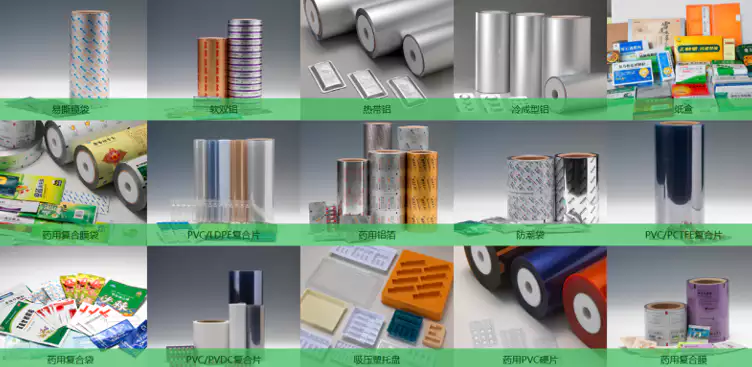RTO for Coil Coating Lines
Introduction
Coil coating lines are vital for the efficient and high-quality production of coated metal sheets used in various industries. To ensure environmental compliance and energy efficiency, Regenerative Thermal Oxidizers (RTO) have become a popular choice for exhaust treatment systems in these lines.
What is RTO?
- RTO, also known as a Regenerative Thermal Oxidizer, is an emission control technology used to destroy volatile organic compounds (VOCs) and hazardous air pollutants (HAPs) released during the coating process.
- It works by passing the exhaust gases through a specialized ceramic media bed, where VOCs and HAPs are thermally oxidized at high temperatures.
- One key advantage of RTO systems is their ability to recover and reuse heat generated during combustion, resulting in substantial energy savings and cost reduction.
Benefits of RTO for Coil Coating Lines
- Improved Air Quality: RTO systems effectively remove harmful emissions, ensuring compliance with environmental regulations and creating a healthier work environment.
- Energy Efficiency: The heat recovery capabilities of RTOs reduce the overall energy consumption of the coil coating line, leading to significant cost savings over time.
- Enhanced Production Efficiency: By maintaining stable operating conditions and reducing downtime, RTOs contribute to increased productivity and reduced maintenance requirements.
- Low Operating Costs: The long lifespan of RTO systems, coupled with their low maintenance needs, make them a cost-effective solution for coil coating lines.
- Flexibility and Scalability: RTOs can be customized to meet specific process requirements and can easily accommodate changes or expansions in production capacity.
Considerations for Implementing an RTO System
- Process-specific Design: Each coil coating line has unique requirements, and an RTO system should be designed to optimize VOC destruction efficiency and energy recovery based on these specifications.
- Heat Recovery Efficiency: The design and selection of the ceramic media bed significantly impact the heat recovery efficiency of the RTO system. It is essential to choose the right media to maximize energy savings.
- Operational Controls: Advanced control systems and monitoring tools ensure optimal performance and allow for real-time adjustments to maintain compliance and efficiency.
- Maintenance and Service: Regular inspections, preventive maintenance, and prompt servicing of the RTO system are crucial to ensure its long-term performance and reliability.
Conclusion
RTO systems offer coil coating lines an effective and energy-efficient solution for controlling emissions. With their ability to comply with stringent environmental regulations while reducing operational costs, RTOs have become a valuable asset in the industry. By adopting RTO technology, manufacturers can enhance their production efficiency, minimize environmental impact, and improve overall sustainability.


Introduction of Our Company
We are a high-tech enterprise specializing in the comprehensive treatment of volatile organic compounds (VOCs) and carbon reduction and energy-saving technologies. Our core technologies include thermal energy, combustion, sealing, and automatic control, with the ability to simulate temperature fields and air flow fields. Additionally, we have testing capabilities for ceramic heat storage materials, molecular sieve adsorption materials, and high-temperature incineration and oxidation of VOCs. We have a RTO technology R&D center and waste gas carbon reduction engineering technology center in Xi’an and a 30,000 square meter production base in Yangling. Our core technology team comes from the Aerospace Liquid Rocket Engine Research Institute (The Sixth Academy of Aerospace). We currently have over 360 employees, including more than 60 research and development technical backbones, 3 senior engineers, 6 senior engineers, and 55 thermodynamic doctors.
Our core products include the rotating valve heat storage oxidation incinerator (RTO) and molecular sieve adsorption and concentration rotary wheel. With our own environmental protection and thermal energy system engineering technology expertise, we can provide customers with a comprehensive solution for the treatment of industrial waste gas and carbon reduction and energy utilization.
Our Certifications and Honors
Our company has obtained certifications including the knowledge management system certification, quality management system certification, environmental management system certification, construction industry enterprise qualification, high-tech enterprise, rotating valve heat storage oxidation furnace turning valve patent, rotor heat storage incineration equipment patent, disc-shaped molecular sieve rotary wheel patent, and more. Below is a picture of our certifications:

Choosing the Right RTO for Coil Coating Lines
When choosing the right RTO for coil coating lines, it is important to consider the following:
- Determine the waste gas characteristics
- Understand the local regulations for emission standards
- Evaluate energy efficiency
- Consider operation and maintenance
- Analyze budget and costs
- Choose the appropriate RTO type
- Consider environmental and safety factors
- Performance testing and verification
Each of these points should be carefully considered. Below is a picture that illustrates these points:

Our Regenerative Thermal Oxidizers Service Process
Our service process includes the following steps:
- Initial consultation, site inspection, and demand analysis
- Solution design, simulation, and review
- Custom production, quality control, and factory testing
- On-site installation, commissioning, and training services
- Regular maintenance, technical support, and spare parts supply
Each of these points should be carefully considered. We are a one-stop solution for RTOs, and our professional team can provide customized RTO solutions for our clients. Below is a picture that illustrates our service process:

We have successfully provided RTO solutions for a number of clients in the coating industry. Here are some examples:
- Project 1: A Shanghai-based enterprise specializing in functional films such as diffusion film, prism film, micro-permeable film, and solar film. The project is divided into two phases, with a 40,000 air volume RTO in the first phase and a 50,000 air volume RTO in the second phase.
- Project 2: Guangdong-based new material technology company specializing in transfer paper, transfer film, electrolytic aluminum, polyester film, window film, protective film, etc. The total waste gas volume is 70,000 m3/h, and the equipment meets emission standards after construction.
- Project 3: Zhuhai New Material Technology Co., Ltd., specializing in wet lithium-ion battery diaphragms. The system has been running smoothly since its implementation.
Author: Miya
